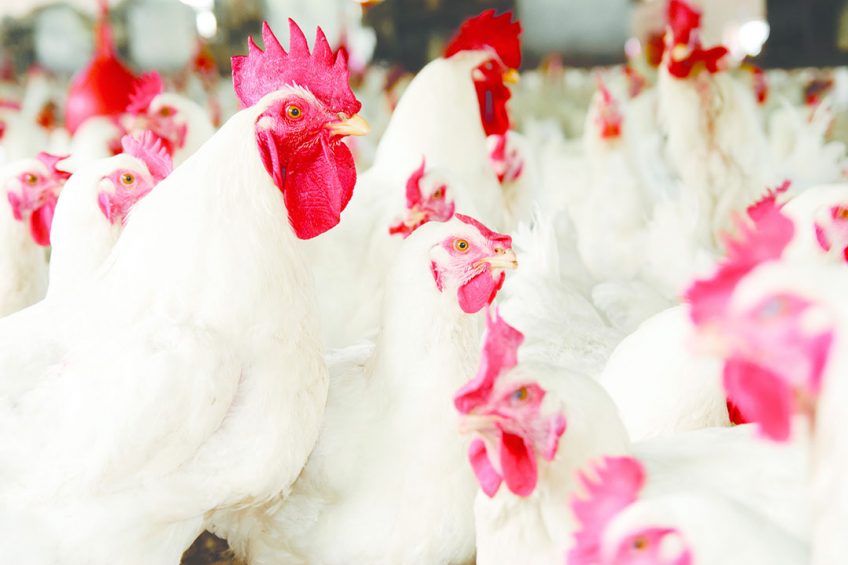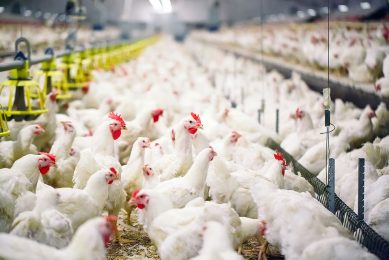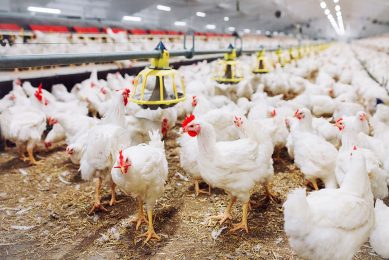Managing salmonella typhimurium LPS challenge

A fever is the body’s natural response to inflammatory stimuli, such as an infection. Once the immune system recognises the infection – bacterial, viral or parasitic – it triggers a change in the body temperature to heal itself.
A fever or inflammatory response can be a two-edged sword. It’s beneficial in that the fever is doing its job to protect the animal, but it can also cause decreases in productivity, growth and feed efficiency. Why? Because the fever response requires nutrients on one side, and it reduces appetite on the other side. Let’s imagine a broiler has 3 buckets of required nutrients – maintenance, growth and muscle development. When inflammation occurs in the form of a fever, the immune system must react and divert nutrients to fight the infection, leaving fewer nutrients available for maintenance, growth and muscle development. In an ideal situation, the fever response is rapid and short lived, and nutrient depletion will be minimal. However, if the inflammatory response is slow and extended, then the animal will need to divert additional nutrients from the maintenance, growth and muscle development buckets to help the immune system fight the infection. Thus, leaving limited nutrients available to support the optimum genetic potential of the animal to grow. In addition, an inflammatory response to an infection or disease can negatively impact feed intake and average daily gain.
Zinc boosts animal’s ability to respond
Trace minerals, such as zinc, are one of the key nutrients that boost an animal’s ability to respond to inflammatory stimuli. Compared to energy or amino acids, the demands of the immune response are higher for trace minerals than for virtually all the other nutrients. And the reason for that is they are co-factors for a lot of the enzymes and protective proteins that are produced by the immune system. If producers take care of immunity first, ensuring the animal has the nutrients needed for a strong initial inflammatory response, then the impact on performance will be limited. Because the animal’s body will not need to spend time and energy fighting the infection or pathogen long-term, rather it can get back to doing what it’s intended to do and that is to gain muscle and/or produce eggs.
Zinc & Salmonella Typhimurium LPS
A study was conducted to evaluate how layers would respond to a Salmonella Typhimurium LPS challenge when fed different forms of zinc. The layers were sorted into two groups — one group received the Salmonella Typhimurium LPS inoculum and the other group was administered saline. Within each group there was a set of layers that served as the control and did not receive any added zinc in the diet, a set of layers received 60 ppm of inorganic zinc sulphate in the diet and a final set of layers received 60 ppm of Availa-Zn in the diet. The study showed that the layers fed zinc from Availa-Zn had a greater cytokine concentration at 3-hours post inoculation (Table 1) simultaneously the rectal temperature in the layers inoculated with the Salmonella Typhimurium LPS challenge peaked earlier, demonstrating a more rapid immune response. In addition, the layers fed Availa-Zn had a lower cytokine concentration at 12-hours post inoculation, and the rectal temperature in the layers returned to an inflammatory neutral state more rapidly. By providing zinc from Availa-Zn, the fever response process was initiated more rapidly, and the fever subsided sooner, illustrating a more efficient immune response that minimises the energy expenditure associated with systemic infection.
Quick recovery after challenge
By including zinc from Availa-Zn in the diet, the producer is equipping the layer or broiler to be able to more quickly recover from a challenge. And in doing so, the bird returns to a normal state of production and more rapidly funnels nutrients to animal performance including growth and egg production. At the end of the day, when producers include zinc from Availa-Zn in the poultry diet, they are helping enhance the overall wellness and performance of the layers and broilers in their operation, while also delivering a strong return on investment.
To learn more about inflammation go to EssentialFeed.com. The site provides additional insights into inflammation and its link to common production challenges, as well as research summaries demonstrating the role performance trace minerals play in the management of inflammation.
Author: Marco Rebollo, Zinpro





